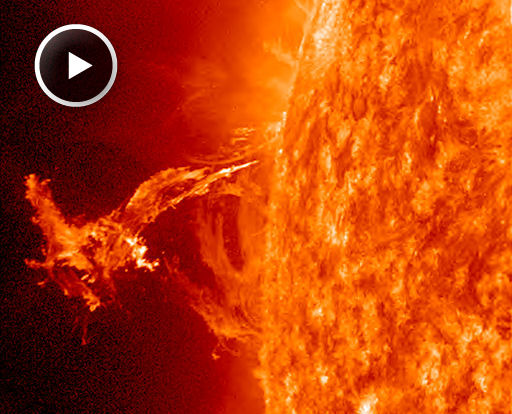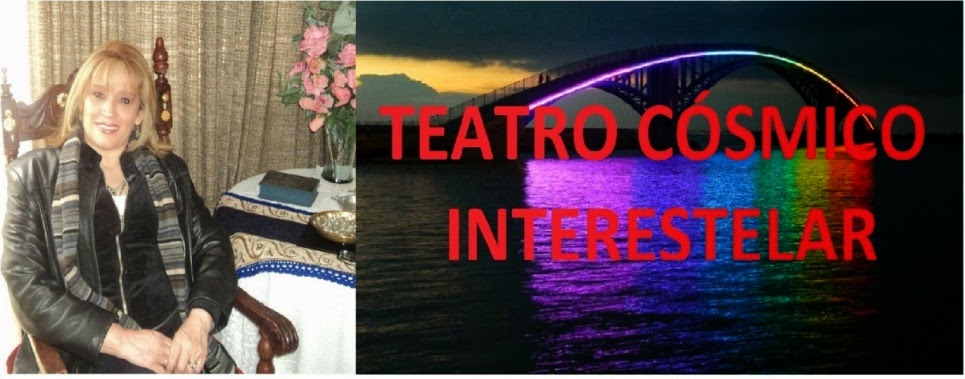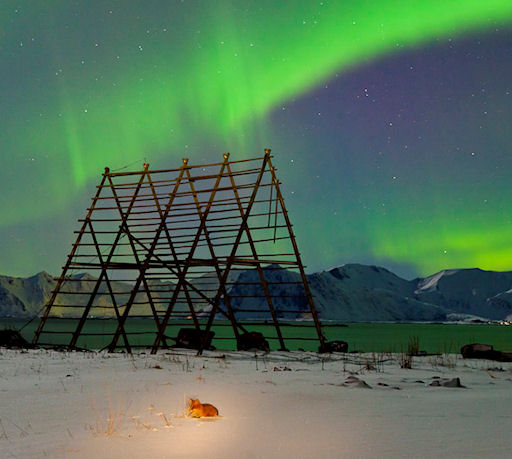| |
| They came from outer space--and you can have one! Genuine meteorites are now on sale in the Space Weather Store. They make a unique Valentine's gift. | | |
SDO SUNDOG MYSTERY: One year ago, NASA's Solar Dynamics Observatory amazed observers when it destroyed a sundog en route to orbit. A new analysis of the event is shedding light on the surprising way rocket shock-waves interact with clouds. Get the full story from Science@NASA.
DODGING PLASMA BULLETS: The remains of old sunspot complex 1147-1149 are rotating over the eastern limb today. Although the region is in an advanced state of decay, it's not dead yet. During the late hours of Feb. 11th, a plasma bullet came rocketing out of the region's unstable core. Watch the movie--but don't blink, because it's fast (21 MB Quicktime):
The eruption was not geoeffective. Earth's magnetic field will remain undisturbed as the 'bullet' sails wide-left of our planet over the weekend.
This region has been spitting plasma and crackling with flares since it first emerged more than a month ago on Jan. 10th. Remarkably, however, every eruption so far has missed Earth. Why? It's just luck: Most of the blasts occurred while AR1147-1149 was on the far side of the sun. Statistically speaking, a plasma bullet in our direction may be overdue. Stay tuned.
THE PERFECT VALENTINE'S GIFT: How about a plane ticket to Norway? A solar wind stream due to brush past Earth's magnetic field around Feb. 14th could spark romantic lights around the Arctic Circle. Gabi and Gunter Reichert send this preview from Henningsvaer, a fishing village in Norway's Lofoten islands:
Note the wildlife in the foreground. "We were taking pictures of the Northern Lights on Feb. 10th when this fox strolled right into our photo," say Gabi and Gunter. "He looked at us from a distance of 4 or 5 meters, yawned, and then laid down. We illuminated him with a little lamp to get this composite of green auroras with a red onlooker."
Aurora watchers red and otherwise should be alert for polar geomagnetic storms next week. Aurora alerts make a nice Valentine's Gift, too: text or voice!
more images: from Valentin Jiganov in the Murmansk region of Russia; from LeRoy Zimmerman of Ester, Alaska; from Øystein Ingvaldsen of Norway; from Maxim Letovaltsev in the Hibiny mountains of Russia; from Chad Blakley of Abisko National Park, Sweden; from Hinrich Baesemann of Tromsø, northern Norway;
Potentially Hazardous Asteroids (PHAs) are space rocks larger than approximately 100m that can come closer to Earth than 0.05 AU. None of the known PHAs is on a collision course with our planet, although astronomers are finding new ones all the time. On February 13, 2011 there were 1197 potentially hazardous asteroids. Notes: LD means "Lunar Distance." 1 LD = 384,401 km, the distance between Earth and the Moon. 1 LD also equals 0.00256 AU. MAG is the visual magnitude of the asteroid on the date of closest approach.
| | The official U.S. government space weather bureau |
| | The first place to look for information about sundogs, pillars, rainbows and related phenomena. |
| | Researchers call it a "Hubble for the sun." SDO is the most advanced solar observatory ever. |
| | 3D views of the sun from NASA's Solar and Terrestrial Relations Observatory |
| | Realtime and archival images of the Sun from SOHO. |
| | from the NOAA Space Environment Center |
| | the underlying science of space weather |
|




No hay comentarios:
Publicar un comentario